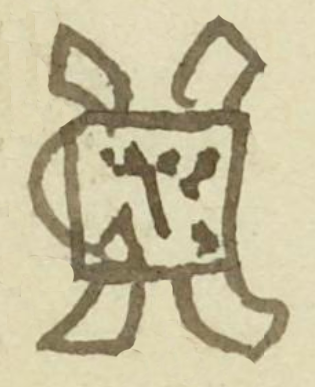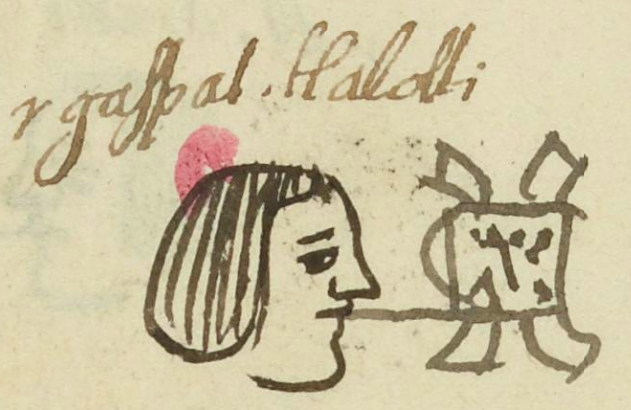Tlalolin (MH580r)
This black-line drawing of the compound glyph for the personal name Tlalolin (“Earthquake,” attested here as a man’s name) shows a square piece of land with markings that may suggest that it is a cultivated, agricultural parcel (tlalli). Sticking out from behind the parcel are parts of the sign for movement (olin). See comparisons below.
Stephanie Wood
Olin can refer to all kinds of movement, but the way it is linked here to land or the Earth (tlalli), suggests that this movement refers to an earthquake. The way the gloss is written, one might suspect that the gloss has something to do with rubber (olli), but olli and olin are often confused because of the tendency to inadvertently insert or omit a final "n" in Nahuatl alphabetic writing. The sign behind the land parcel looks much more like movement than rubber.
Stephanie Wood
gaspal.tlalolli
Gaspar Tlalolin
Stephanie Wood
1560
Jeff Haskett-Wood
lands, parcels, tierras, agricultura, tenencia de la tierra, terrenos, sementeras, hule, rubber, movement, movimiento

tlalolin, earthquake, https://nahuatl.wired-humanities.org/content/tlalolin
tlal(li), land, https://nahuatl.wired-humanities.org/content/tlalli
ol(li), rubber, https://nahuatl.wired-humanities.org/content/olli
ol(in), movement, https://nahuatl.wired-humanities.org/content/olin
Tierra-Movimiento
Stephanie Wood
Matrícula de Huexotzinco, folio 580v, https://www.loc.gov/resource/gdcwdl.wdl_15282/?sp=240&st=image
This manuscript is hosted by the Library of Congress and the World Digital Library; used here with the Creative Commons, “Attribution-NonCommercial-ShareAlike 3.0 License” (CC-BY-NC-SAq 3.0).









